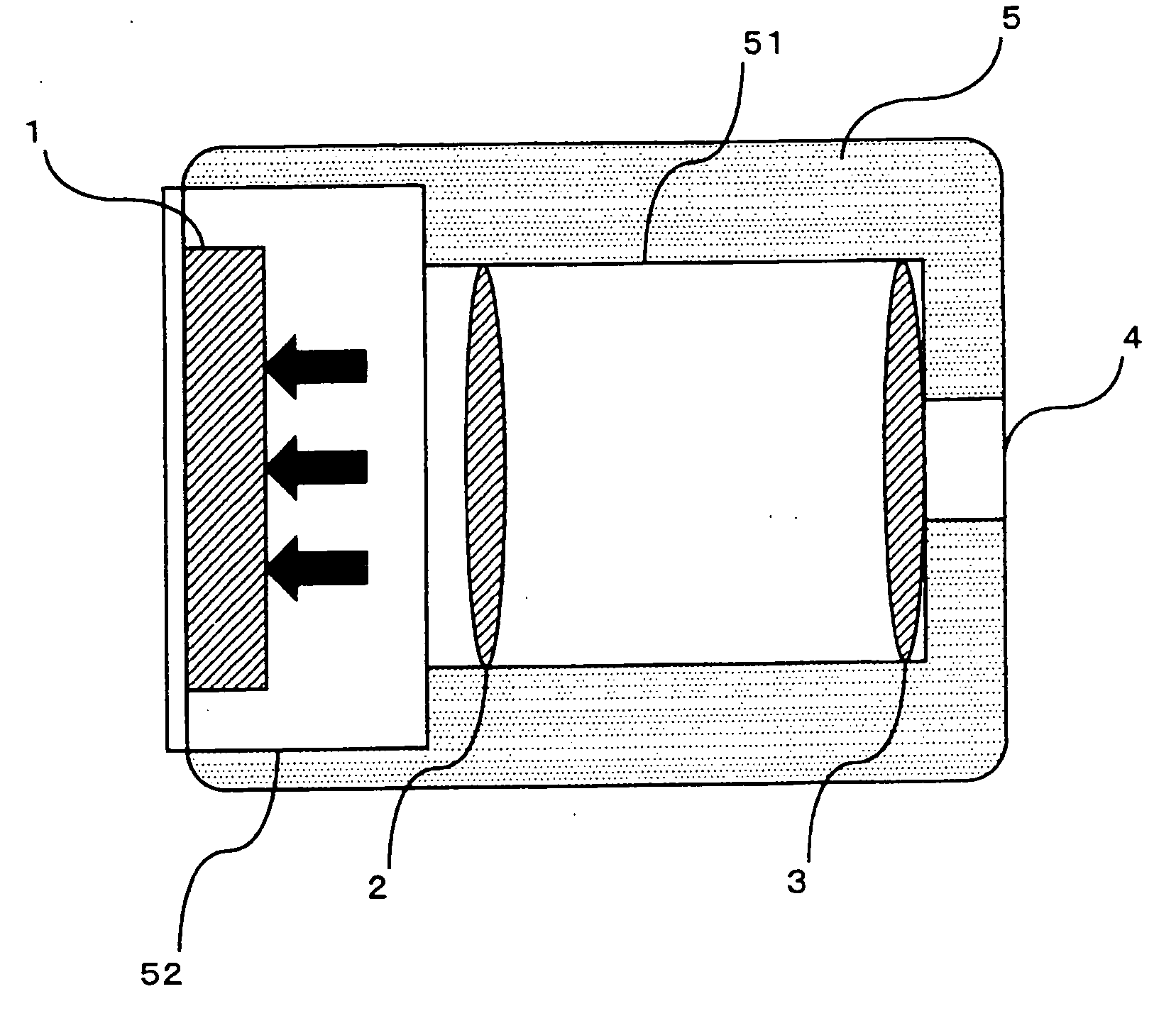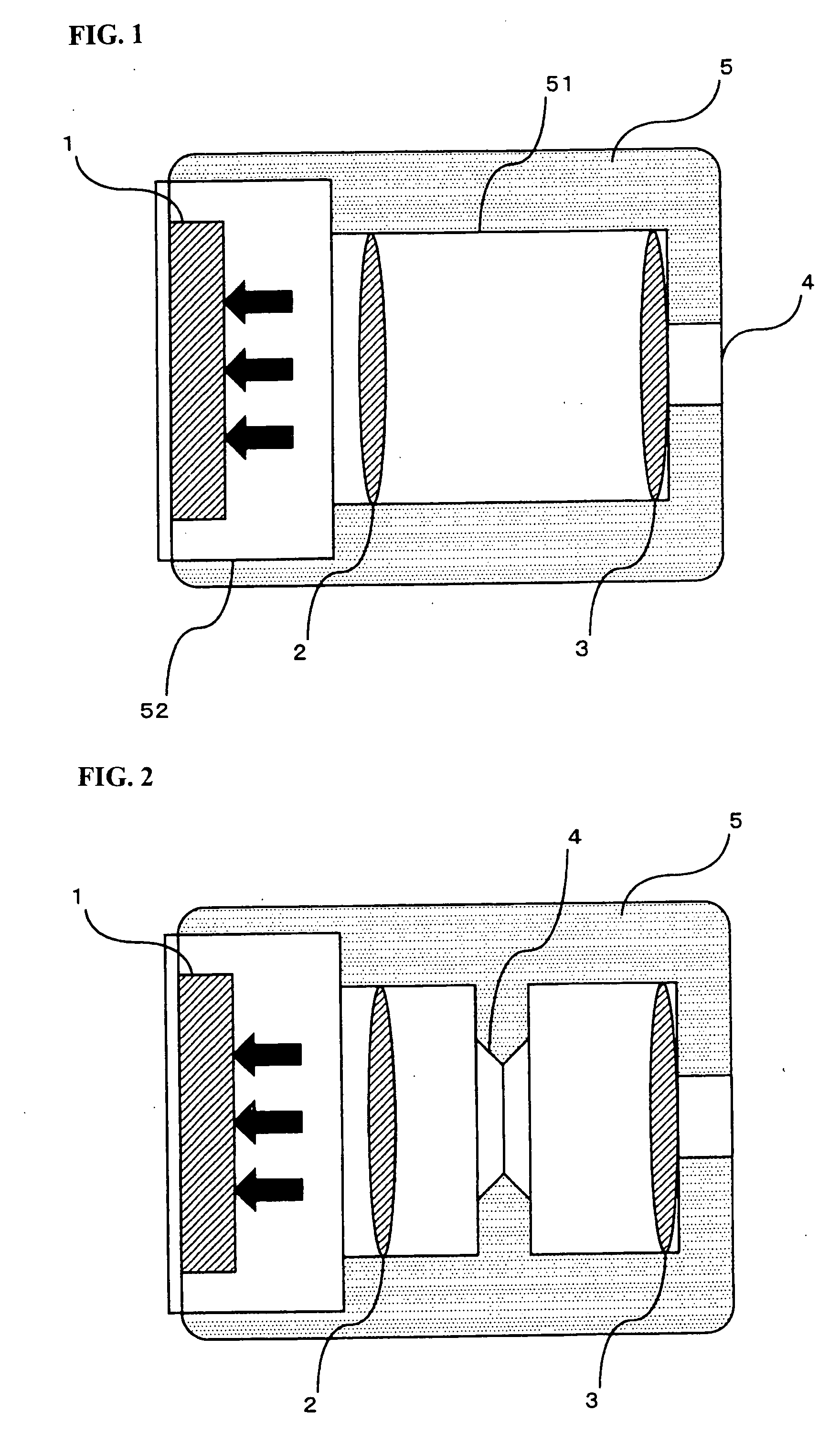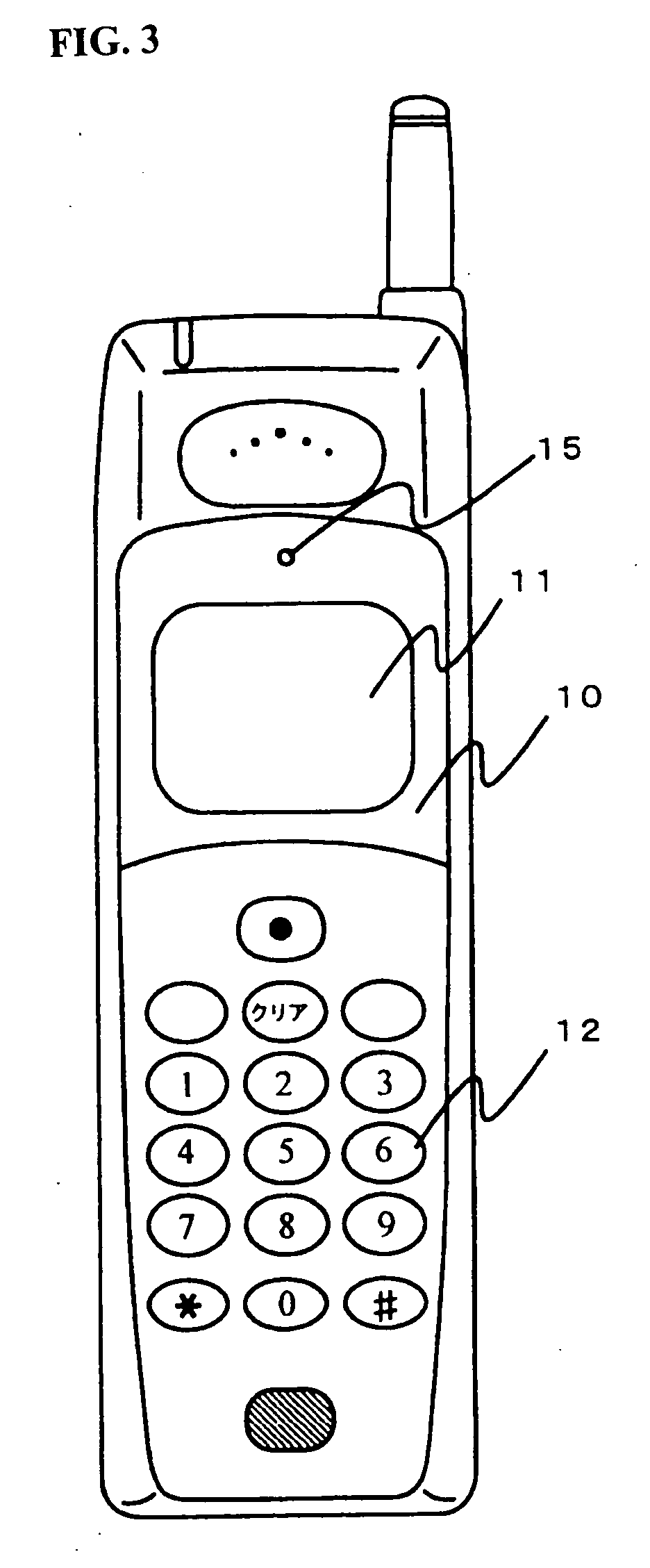Pinhole type imaging device
a pinhole type, imaging device technology, applied in the direction of instruments, material analysis, television systems, etc., can solve the problems of inability to obtain sharp images of objects not positioned at the fixed distance, inability to obtain sharp images, complicated structure, etc., to achieve simple structure, long life in use, compact size
- Summary
- Abstract
- Description
- Claims
- Application Information
AI Technical Summary
Benefits of technology
Problems solved by technology
Method used
Image
Examples
example 1
[0028]FIG. 1 shows a pinhole type imaging device with two optical lenses, where a pinhole 4 with a diameter of 0.8 mm is formed at a distal end of a main unit 5, and a depth of the pinhole 4 is set to 2 mm. A rear end of the pinhole 4 is expanded to constitute a lens cylinder 51 with a large diameter. A rear end of the lens cylinder 51 is further expanded to constitute an accommodation space 52 with a large diameter for a photoelectric converting sensor 1. Optical lenses 3 and 2 are sequentially fitted into the lens cylinder 51 from a rear portion of the main unit 5 and the photoelectric converting sensor 1 is disposed in the accommodation space 52. The main unit 5 is integrally formed from opaque material and it constitutes a light shielding wall for preventing light rays from advancing from a portion of the main unit 5 other than the pinhole.
[0029] When the pinhole type imaging device of Example 1 is used, light rays from a subject within a visible range (an object to be photogra...
example 2
[0030]FIG. 2 shows another Example of the pinhole type imaging device according to the present invention, and it is different from the Example 1 in that two optical lenses 2 and 3 are provided at front and rear ends of the pinhole 4 in the former. The optical lens 2 is fitted at a distal end of the main unit 5, and a pinhole 4 with a diameter of 0.75 mm is formed concentrically with the optical lens 2 behind the optical lens 2, where a depth of the pinhole 4 is set to 3 mm. A rear end of the pinhole 4 is expanded to constitute a lens cylinder 51, and a rear end of the lens cylinder 51 is further expanded to constitute an accommodation space 52 with a large diameter for a photoelectric converting sensor 1. The optical lens 3 is fitted into the lens cylinder 51 from a rear portion of the main unit 5, and the photoelectric converting sensor 1 is disposed in the accommodating space 52. The main unit 5 is integrally formed from opaque material and it constitutes a light shielding wall fo...
example 3
[0031]FIG. 3 and FIG. 4 shows an Example of a cellular phone applied with the pinhole type imaging device of the present invention.
[0032] The cellular phone has a casing 10 whose front face is provided with a display unit 11, an operation unit 12, and a pinhole unit 15.
[0033] The pinhole unit 15 is formed at an upper end with a pinhole 19 with a diameter of 0.8 mm, and a convex lens 16 is fittingly provided on the opposite face of the pinhole type aperture stop from a subject side. An accommodation space for a CCD image sensor 18 is defined at a lower portion of the pinhole unit 15, a filter glass 181 and a sensor unit 182 are included in the CCD image sensor 18, and the sensor unit 182 is fixed to a main base plate 17, and the filter glass 181 is disposed above the sensor unit 182.
[0034] A storage unit or a chip of the cellular phone which stores image data produced from image signals obtained by an image photographed by a corresponding CCD image sensor 18 or a signal processing...
PUM
 Login to View More
Login to View More Abstract
Description
Claims
Application Information
 Login to View More
Login to View More - R&D
- Intellectual Property
- Life Sciences
- Materials
- Tech Scout
- Unparalleled Data Quality
- Higher Quality Content
- 60% Fewer Hallucinations
Browse by: Latest US Patents, China's latest patents, Technical Efficacy Thesaurus, Application Domain, Technology Topic, Popular Technical Reports.
© 2025 PatSnap. All rights reserved.Legal|Privacy policy|Modern Slavery Act Transparency Statement|Sitemap|About US| Contact US: help@patsnap.com



